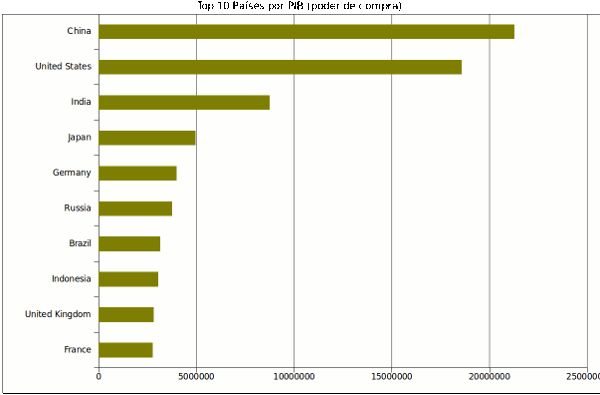Table of Contents
Meaning of GDP
The GPD (Gross Domestic Product) is perhaps the most used measurement of the size of a country's economy. Definition: GPD is the monetary value of all the goods and services produced within the borders of a country during a specific time period.
Breaking Down the GPD
Product means the value of final goods and services. It can also be seen as the added value by each production stage or the sum of the rents to the production factors.
Domestic means that only the production inside the borders of a country is taken into account. If an american person produces inside Germany, that production is taken into account in the GDP of Germany. Gross means that capital depreciation is not taken into account. A small portion of the GDP is to replace obsolete capital. This production is considered when calculating the GDP.
Another measures of the production of a country are the national product, that consideres the nationality of the factor of production and not it's location, and the net product, that doesn't include the production to replace obsolete capital.
GDP Growth Rate
The GDP Growth Rate is the percentage increase in GDP from period to period. The period can be a quarter, a month, a year, etc.
When GDP grows, it is considered that the economy is working properly. Employment grows and there are more goods and services available.
GDP per Capita
The GPD can tell us a lot about the size of an economy as a whole. But countries with a lot of population, like China, will naturally have a larger GPD when compared with smaller countries, but with a higher output per person.
In order to compare the output per capita between countries, the GDP per Capita is used. To calculate the GDP per capita, the GPD is divided by the number of residents in a country.
GDP International Comparisons
If a country has a larger GDP than another country, it is considered that the economy of the country with the larger GPD is “bigger”. Small countries, like Japan and South Korea, can have a large GDP. On the contrary, big countries, like Kazajstán, can have a small GDP.
The top 10 countries by GDP (by purchasing power parity) are:
- China
- United States
- India
- Japan
- Germany
- Russia
- Brazil
- Indonesia
- United Kingdom
- France

How is GDP Calculated?
GDP is calculated using the following formula:
GPD = Consumption + Investment + Government Expenditure + Net Exports
Consumption is the expenditure done by the private sector that is not investment nor imports.
Investment is the expenditure in capital goods done by business, families and private individuals.
Government Expenditure is the expenditure done by government agencies. It includes the expenditure in education, infrastructure, national security, social health, etc.
Net Exports are the value of all the exports minus the value of all the imports.
In most of the developed countries, consumption represents the larger part of the GDP. It is usually between 55% and 70%.
Investment is usually between 15% and 22%. In China and India, investment has a larger share (47% and 34%), because the GDP of these countries is growing fast.
Government expenditure is usually between 30% and 50%. In countries with high per capita GDP and government social support, like Sweden and France, the share of government expenditure is very high.
Worldwide, net exports sum is cero. Some countries, are big net exporters, like Germany (6.6% of GDP) and Russia (9.4% of GDP). Other countries are big net importers, like US (-4.3% of GDP), UK (-6.2%), Greeceland (-7.9%) and Portugal (-9.8). (Data from 2010, take into account that net exports are very volatile)
See also:
National Income
factors-of-economic-growth
Discussion